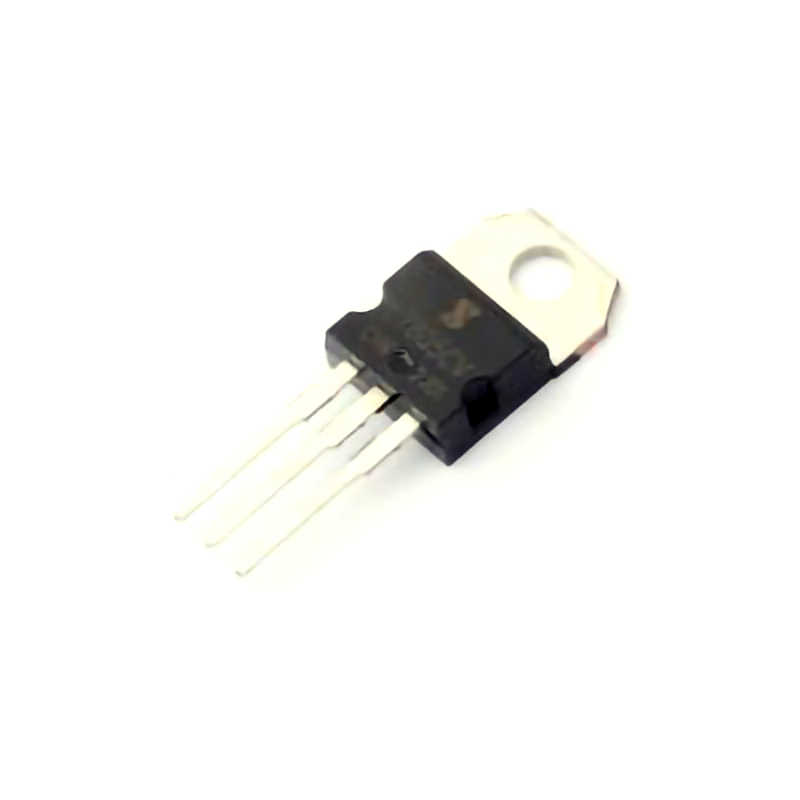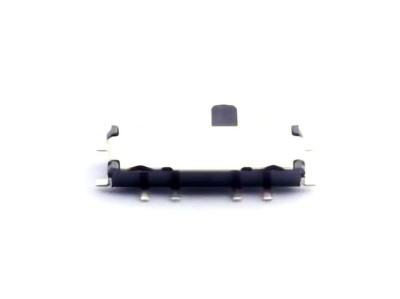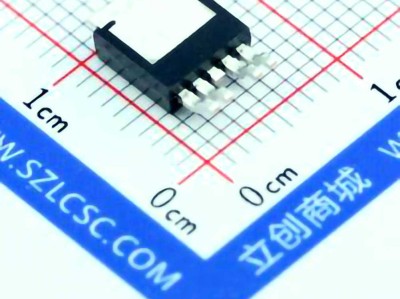
Understanding the L7805CV Voltage Regulator and Common Problems
The L7805CV is one of the most widely used voltage regulators in the world of electronics. Known for its reliability and ease of use, the L7805CV regulates an input voltage of up to 35V and provides a steady 5V output, making it ideal for Power ing microcontrollers, sensors, and other low-voltage electronic devices. However, as with any electronic component, users may experience some common issues that can interfere with its performance. In this section, we will dive into some of these common problems and how to identify them.
1. No Output Voltage
One of the most frustrating problems when using the L7805CV is the absence of output voltage. A device that should be powered is suddenly non-functional, and troubleshooting becomes necessary.
Potential Causes:
Incorrect Input Voltage: The L7805CV requires an input voltage between 7V and 35V to provide a stable 5V output. If the input voltage is too low (below 7V) or too high (above 35V), the regulator will not function properly.
Wiring Issues: Loose or improperly connected input and output wires can result in no output. Make sure the input is properly connected to the positive terminal of the power source, and the output is connected to your circuit.
Damaged Regulator: If the L7805CV has been overheated or has experienced an overcurrent situation, it could be damaged, leading to a lack of output.
Solution:
Verify the Input Voltage: Use a multimeter to check the input voltage. Ensure it is within the recommended range (7V to 35V).
Check Wiring: Double-check all connections for stability, and ensure there are no broken wires or loose connections.
Replace the Regulator: If the input voltage is correct, but no output is present, consider replacing the L7805CV, as it may have been damaged.
2. Overheating and Thermal Shutdown
Another common issue with the L7805CV is overheating. The regulator may get excessively hot and enter thermal shutdown, cutting off the output to prevent damage. This is particularly common when the regulator has to step down a large input voltage to 5V or when the current drawn by the load is too high.
Potential Causes:
High Input Voltage: If the input voltage is significantly higher than 5V, the L7805CV has to dissipate more heat. For example, if you input 12V or higher, the regulator must drop the voltage significantly, causing it to heat up.
Excessive Load Current: The L7805CV has a current limit of around 1A, though in practice it is often safer to use it at lower currents. Drawing too much current can lead to overheating.
Insufficient Heat Sink: The L7805CV does not have a built-in heat sink, and if the regulator is powering a high-current load, it will need an external heat sink to prevent overheating.
Solution:
Lower Input Voltage: If possible, reduce the input voltage to a more reasonable level (e.g., 9V instead of 12V). This will reduce the thermal dissipation.
Use a Heat Sink: Attach a suitable heat sink to the L7805CV to help dissipate heat and prevent thermal shutdown.
Limit the Load: Ensure the current drawn by the circuit is within the safe operating limits of the regulator. If necessary, switch to a higher current regulator or use a more efficient switching regulator.
3. Instability and Noise on Output Voltage
While the L7805CV provides a stable 5V output in most cases, users sometimes report issues with instability or noise on the output voltage. This can lead to erratic behavior in powered devices, especially sensitive ones like microcontrollers or communication module s.
Potential Causes:
Lack of Decoupling capacitor s: The L7805CV requires Capacitors at both the input and output to stabilize the voltage and filter noise. Without these capacitors, the regulator may oscillate or produce noise on the output.
Poor Grounding: Poor grounding in your circuit can introduce noise and instability into the output.
Unstable Input Source: If the input power supply is unstable or noisy, it can affect the output of the L7805CV.
Solution:
Add Decoupling Capacitors: Typically, a 0.33µF capacitor is placed at the input and a 0.1µF capacitor at the output of the L7805CV. These capacitors filter out high-frequency noise and provide stability.
Ensure Proper Grounding: Make sure the ground plane in your circuit is solid and well-connected, with minimal resistance between the components.
Use a Stable Power Supply: If you're using a battery or unregulated power source, consider switching to a more stable, regulated power supply to reduce input noise.
4. Ripple and Voltage Drop Under Load
Under heavy load conditions, you may notice a drop in the output voltage or an increase in ripple, which could lead to malfunctioning devices. This can be particularly problematic when the regulator is supplying power to a sensitive microcontroller or sensor.
Potential Causes:
High Load Current: When the L7805CV is asked to supply more current than it is rated for, the output voltage may sag or ripple.
Insufficient Input Capacitor: Without proper input filtering, the L7805CV may experience ripple or voltage fluctuations that manifest as a poor-quality output voltage.
Solution:
Reduce Load Current: Ensure the current drawn by the load is within the L7805CV's capacity. If you need to supply more current, consider using a higher-capacity regulator.
Improve Filtering: Adding additional capacitors, such as a larger 10µF or 100µF capacitor on the input, can help smooth out voltage fluctuations and reduce ripple.
Advanced Troubleshooting and Prevention Tips for L7805CV
While basic troubleshooting can resolve most issues with the L7805CV, there are some advanced techniques and preventative measures that can help ensure long-term reliability and performance. In this section, we will discuss these advanced solutions to get the best out of the L7805CV and avoid common pitfalls.
5. Overcurrent Protection and Current Limiting
One of the most common causes of damage to the L7805CV is overcurrent situations. This can occur when the power demands of your circuit exceed the regulator's capacity, leading to overheating, voltage drops, and potential failure. However, there are ways to protect the regulator and ensure it operates safely.
Potential Causes:
High Current Draw: Drawing too much current from the L7805CV can cause it to overheat and eventually fail. The typical current limit for this regulator is 1A, but it is best to keep it under 500mA for continuous use.
Short Circuit: If there is a short circuit in your load, the L7805CV will try to supply current to the circuit, causing the regulator to overheat.
Solution:
Use a Fuse: Adding a fuse in series with the output can provide protection in case of short circuits or excessive current draw. This can help prevent damage to the L7805CV and the rest of your circuit.
Add a Current-Limiting Resistor: Use a current-limiting resistor in your design to prevent excessive current from being drawn by the load, ensuring the regulator remains within safe operating limits.
6. Consider Using a Switching Regulator for Higher Efficiency
While the L7805CV is an excellent linear voltage regulator, it can be inefficient when dealing with large voltage differences between the input and output. In such cases, the regulator dissipates excess energy as heat, which can lead to thermal issues and wasted energy.
Potential Causes:
Large Input-Output Voltage Differential: If your input voltage is much higher than 5V (e.g., 12V or 24V), the L7805CV will need to dissipate a lot of energy as heat, which can lead to inefficiency and overheating.
Solution:
Switch to a Switching Regulator: For applications where efficiency is critical, consider using a switching regulator (also known as a buck converter). These regulators convert excess voltage to current more efficiently than linear regulators like the L7805CV, reducing heat generation and improving overall efficiency.
7. Regular Maintenance and Monitoring
Even after you have successfully addressed initial issues, it is important to continue monitoring the performance of the L7805CV. Over time, capacitors can degrade, and components may wear out, especially in circuits that are subject to high loads or environmental stress.
Solution:
Regular Testing: Periodically check the output voltage with a multimeter to ensure the L7805CV is still functioning correctly.
Replace Aging Components: If you notice instability, consider replacing the input and output capacitors or the regulator itself.
In conclusion, the L7805CV is a versatile and widely used voltage regulator, but like all components, it requires careful attention to function correctly. By following these troubleshooting tips and solutions, you can resolve common issues and improve the performance and longevity of the regulator in your electronic projects. Whether you're a hobbyist or a professional, understanding the quirks of the L7805CV will help you achieve reliable, consistent power delivery for your circuits.
If you are looking for more information on commonly used Electronic Components Models or about Electronic Components Product Catalog datasheets, compile all purchasing and CAD information into one place.


